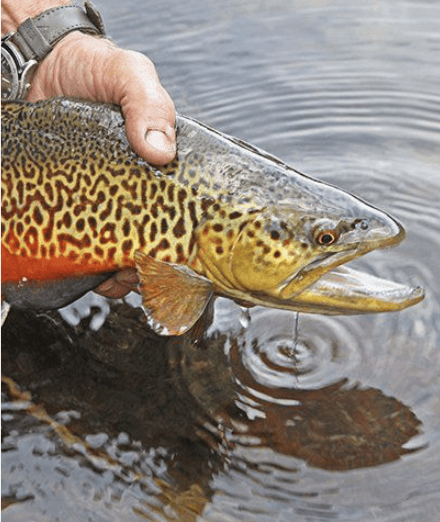Tiger Trout Information
Tiger Trout Information
One of the most coveted and highly-sought-after trout in the American West, the rare combination of a brook and a brown trout known as the tiger trout is on almost all anglers’ bucket lists. A scarce occurrence in the wild, as brook trout have two more chromosome pairs than browns which makes natural creation unlikely, tiger trout boast a fluorescent and complicated pattern on their hide. Although they are not native to Colorado because neither brook nor brown trout were historically found in the Centennial State, tiger trout do occur naturally in parts of the state and can be targeted on the fly. If you do manage to find and catch a wild tiger trout, especially if it has reached its mature size of 18-20 inches in length or even larger, you will truly be in a rarified class of anglers.

Size and Habitat
Tiger trout, in their wild form, are found wherever brook trout and brown trout coexist, which is only a select amount of Colorado waterways and are usually large and higher elevation lakes and reservoirs. Additionally, Colorado Parks and Wildlife has been stocking tiger trout in lakes for many years as a way to manage the population of undesirable species in these stillwater settings such as suckers and minnows. So, if you find a lake or reservoir that holds both brook trout and brown trout, or conversely, has a minnow or sucker population, there is a good chance that some tiger trout are patrolling its depths. Most lakes and reservoirs managed by the state government have information on the trout species that call them home, so a quick search online will likely tell you if your favorite stillwater fishery holds these strikingly beautiful fish. When you do hook a tiger trout, don’t be surprised if it aggressively peels the line off your reel; according to research, tiger trout grow at a faster rate than either brooks or browns, and have been known to exceed 20” in length and 5 pounds in weight. Their predatory feeding patterns attribute to their speedy rate of growth, so flies that imitate smaller fish species or leeches with likely get a strike.
Spawning and How to Target Tigers
Tiger trout are born infertile, so fish of this species are not able to viable reproduce in the fall like brook trout and brown trout are. Despite this, do not be surprised if tigers exhibit similar spawning behaviors as their parent species during the months leading up to winter. Their feeding habits also mimic that of brook and brown trout, meaning that using larger flies to imitate small fish or leech will likely yield positive results. Tiger trout are known to be voracious fighters, so be ready for a long battle and to give some line to these fish when they do strike your flies. Additionally, due to the rarity of wild tiger trout and the high cost of producing these fish in hatcheries, please consider practicing catch and release so that this extremely limited population of astoundingly beautiful trout can stay as large as possible. Good luck out there!
